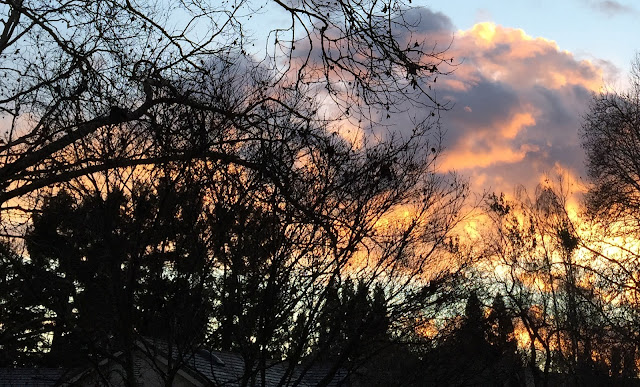What brings the shift of seasons to your attention where you live?
Here in Northern California, the change is subtle from autumn to winter. Chilly mornings that grow to 80 degrees continue all fall until the first rain. We wait for the leaf colors that other places view in September.
We are just getting our full week of color now.
Yesterday the wind was different. The chilly gusts skipped around spreading a dance of leaves across the street and back again.
This time of year is a good time for us to clean up the garden and plant new plants. We hope the rains will provide enough water to encourage the roots to dig deep beneath the soil.
We don't have the snow that some of you have in the fall. We cross our fingers that we don't have another drought year instead. We live on hope.
We wrap ourselves in scarves, sweaters and coats, tuck gloves in our pockets and seek a warm spot in the sun. We sip hot chocolate or lattes and read good books. We notice that the morning sunlight rises later and later.
Long autumn shadows and acorns cast themselves across our paths. We hurry home wondering why three o'clock now reminds us that it is almost time for dinner. We imagine bubbling soups and chilis and warm homemade bread. We know that winter is almost here.
























